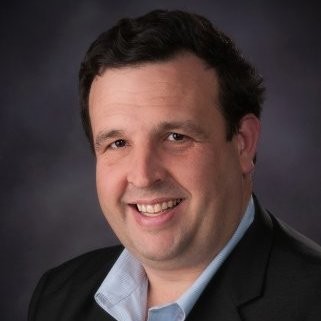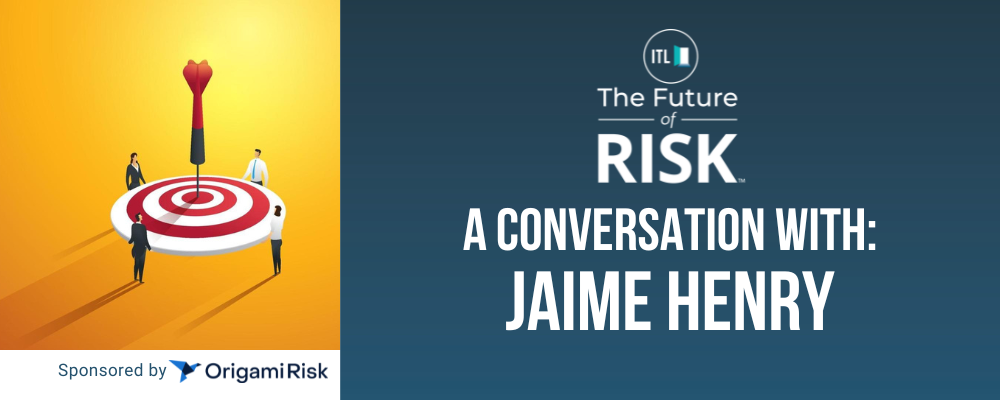 |
Michael Reilly is a managing director in Accenture's insurance strategy. He has more than 20 years of experience helping insurance companies around the world transform underwriting operations and organizations. He has led large-scale commercial insurance transformation programs in underwriting, policy, business intelligence and mergers and acquisitions. He has also co-written and presented multiple articles on underwriting, analytics and knowledge management. |
Paul Carroll
Of all the things you’ve written, perhaps the most startling to me was based on some work you did with The Institutes, ITL’s parent. You wrote that underwriters only underwrite about 30% of the time. The rest of the time is spent on paperwork and on sales-related work. Is that still pretty much where we are?
Michael Reilly
Yes. We just did a survey with a client, and the numbers are tracking around the same 30% to 40%. It varies a bit by carrier, but that’s about what is spent on the core risk evaluation. There's a lot of other stuff that underwriters spend time on that is, quite frankly, administrative or data prep that they shouldn't be spending time on.
Paul Carroll
What would a reasonable goal be?
Michael Reilly
A reasonable goal is closer to 60%. There are now technology solutions that help the underwriter focus and do their evaluations faster. There's no reason why I can't get unnecessary tasks off their plate.
Paul Carroll
Someone used a new term with me the other day: “digital paper.” They said that, sure, insurance had made progress toward being paperless but that we now have digital paper: PDFs, spreadsheets and other documents that, while in electronic form, still require all the manual flipping through and drawing data from that we’ve always done with paper. How do you get beyond digital paper and all the way to digital?
Michael Reilly
This is a favorite topic that I talk about all the time. I joke that underwriting hasn't changed in 300 years.
Sure, 300 years ago it was done in a coffee shop. Someone came down the street with the application, the junior underwriter popped out and got it and the underwriters created a file folder that they passed back and forth while they did their work. In modern times, we started to mail documents back and forth, then we FedEx-ed them, then we had fax machines and, congratulations, today we do email. But those emails include PDFs, so they aren’t really digital data. The information is still locked away. And what do we do with those emails? We put them in file folders. They’re digital file folders, but they’re still file folders.
I'm old enough to remember an underwriting space where you had these Manila file folders with seven parts. The first part had correspondence. Then you had your application. You had your loss runs, your statement of values and so on. Now go look at today’s electronic files. You have the same seven parts. It’s like you just took the old system and moved it over.
People are pushing around digital pieces and saying, ooh, we have digital workflow. Digital workflow has replaced the mailrooms, but that’s about it.
While there’s a bit of variation, a core kind of commercial submission document for property/casualty probably has about 500 useful pieces of information. Our core rating system and policy systems carry just enough information to get the rate done and get the policy issued. All of that other risk data stays locked away in those PDFs, so the underwriter has to look at it individually. At a renewal, you'll see the underwriter with two PDFs on two different screens trying to figure out what's different.
Today, a carrier might send the submission to an operations person or maybe offshore, where someone types in 100 pieces of data. That's nice, but I left 400 behind, and the 400 I left behind are the stuff that tells the story that the underwriter uses to make their decision.
But technology tools now let me digitize all that data and ingest the whole thing, not just the 100 fields, and show it to the underwriter at the key decision points.
The magic of an underwriter is that they’ve seen an awful lot of these things before. So we rely on the underwriter to make a judgment call. Is this average, below average, above average? But what if I could use data and show you exactly where this submission is average, below average and above average? I can look at the claims frequency, at the cost per square foot, at the number of employees, and I could show you compared with a peer group exactly where this one is, without your having to dig through the PDFs.
I can set up an analytical view from a triage perspective. What's our probability to win this? Are there flags on this building that mean I should spend more time evaluating it? From a negotiating perspective, what’s our experience with this broker? At renewal, I can do a side-by-side digital comparison of what's changed year over year, to focus the underwriter’s attention on exactly what's different so they can figure out what to do.
I can make the underwriter incredibly more efficient if I break that cycle of paper documents and move from PDF to digital to true digital. That's the vision we're talking about.
Paul Carroll
I'm sold. Why hasn't this happened yet?
Michael Reilly
Several reasons. One is the ingestion technology is relatively new, and carriers are just getting their arms around the tools. Some work better than others, and there have been some false starts. Digitization takes some time, and, quite frankly, a lot of carriers are short-sighted. They only think to digitize the same data they use today in their policy and other systems and aren't taking the extra leap and thinking what else they can do. Some also just lack imagination.
The technology is there. There’s not a technology limitation any more. The issue is just, Do you have the imagination to actually picture a digital underwriting path and then drive to that path?
Insurers like to be fast followers. They don't always like to be first doers.
But we're starting to see pockets of experimentation here and there. Two years ago, it was only pilots for ingestion. Last year, a couple players became more serious about ingestion and did a little bit of playing with the analytics, though mostly for the management team, not the frontline underwriter. That's another problem we see: Carriers get focused on Google, with all this cool data for the managers, and don’t recognize that the real value of the data is in giving it to the front line.
I describe underwriting systems sometimes as three generations. The first was a policy system. The second was our workflow system. The third is these big data platforms and stuff. You're seeing some new players, like Federato, at maybe level 2.5 or 2.7. They’re not quite a level 3, but they're definitely pushing the boundaries.
Paul Carroll
How long would it take me, if I'm a good-sized carrier, to go full bore on these sorts of ingestion and analytics capabilities? Are we talking about a two-year effort, a five-year effort?
Michael Reilly
It varies a bit, but on the extraction side I can tell you that, for a project we started over a year and a half ago, we had the first submission extraction going for North America in three months. In four more months, we were extracting all North America submissions for APEX submissions, all U.K. submissions, and we're getting ready to do Europe.
So could you be extracting all the data within a year? Yes, you could. The complexity is putting that data into your systems, but the cleaner you have the landscape on the extraction side, the faster you can go.
There are still some challenges. We’re running at 95% or 96% accuracy, so not necessarily 100%. You still need to plan for some humans in the loop and some bit of correction, but you can still be way more efficient than you are today.
Paul Carroll
I'm really curious about this idea of the dark data. What's lurking in those 400 pieces that you don't have?
Michael Reilly
Maybe you don’t see that computer equipment is in the basement in a flood zone. Wildfire zones change year to year, and policy documents aren’t smart enough to match the changes against the locations of the properties being covered. We saw that when wildfires hit California. Good carriers had a better view of what their current book was. It’s not that other carriers didn’t have the right data within their walls; the data just wasn’t accessible within their walls.
Paul Carroll
Are there any things I haven't asked about that are top of mind for you about underwriting that I should have asked about?
Michael Reilly
There are two other hot topics. One is AI, which everybody gets excited about. I think we're too excited, to be honest, in some degrees. It can be applied in the tooling and in the preparation but not necessarily in the core underwriting decision until there’s more transparency about how it makes decisions. I’m making $100 million decisions. I'm not trusting the AI to do that yet.
There's still too much nuance, especially in the commercial space. There's a wonderful commercial bakery near us. But they also let the public come in, and you can get a hot roll right out of the oven. So now it’s a commercial bakery and a retail bakery. Oh, by the way, they bought the best deli in the area and put one of the shops actually in their bakery, with the other one down the street. Now you get the hot roll off the conveyor belt, walk it over and have them make a sandwich for you. Best sandwich in the world.
An underwriter can interpret all those different exposures and figure out how to balance everything. AI is very good at looking at homogeneous risks and seeing the patterns of a homogeneous risk, but commercial insurance isn't homogeneous. AI won’t replace the underwriter, but it can make the underwriter smarter by putting the data in context.
Paul Carroll
The other hot topic?
Michael Reilly
You're seeing this more in Europe than we are in the U.S., but there is the green element coming in, and carriers need to consider that from the risk perspective. Carriers need to figure out what their commitments to becoming green by a set time mean, not just for their investment portfolios but for their underwriting. Do I cover those businesses or not cover those businesses?
Paul Carroll
Super. Thanks so much for your time and your insights, Michael.








